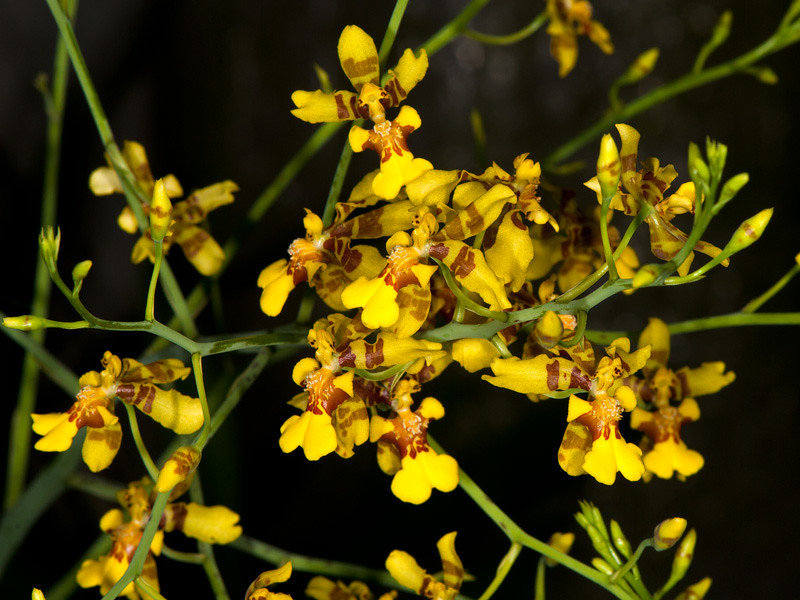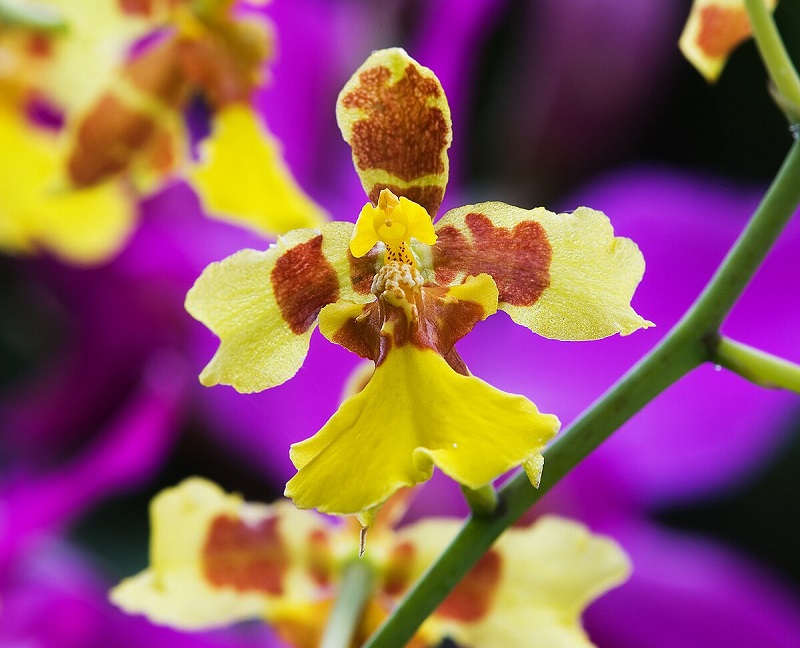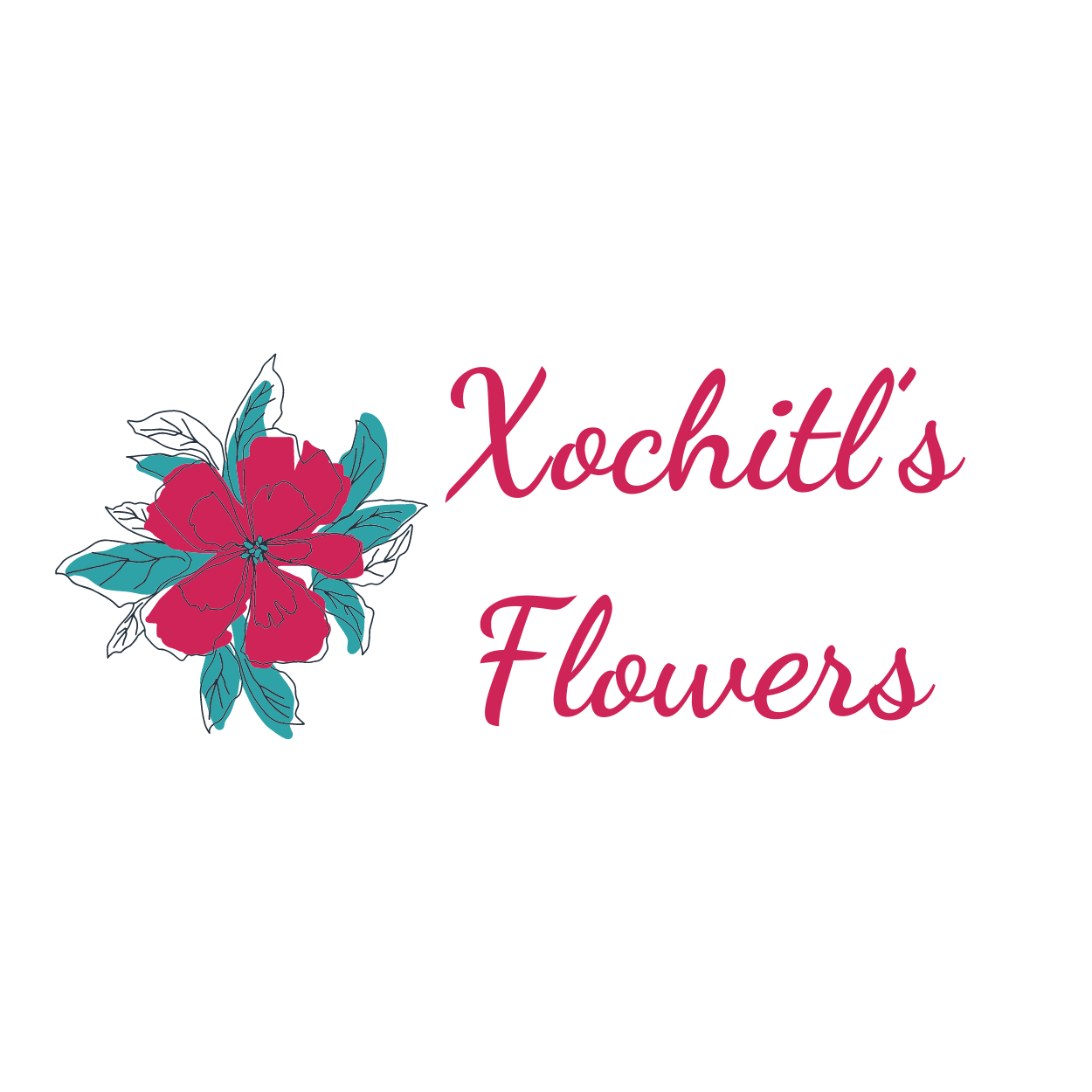Oncidium orchids, often referred to as “dancing ladies” due to the unique shape of their flowers, are among the most vibrant and diverse members of the Orchidaceae family. With their dazzling array of colors and intricate patterns, these orchids are a favorite among horticulturists and plant enthusiasts alike. This guide delves into the fascinating world of Oncidium orchids, covering their botanical classification, morphology, natural habitat, cultivation techniques, and much more. Whether you’re an experienced orchid grower or a beginner looking to explore these stunning plants, this article provides valuable insights to help you cultivate and care for Oncidiums successfully.
Botanical Classification
Family and Subfamily
Oncidium orchids belong to the Orchidaceae family, one of the largest and most diverse plant families in the world. Within this family, they are classified under the subfamily Epidendroideae and the tribe Oncidiinae.

Genus and Key Species
The genus Oncidium encompasses a broad range of species known for their distinct floral characteristics. Notable species include:
- Oncidium sphacelatum
- Oncidium baueri
- Oncidium twinkle
These species exhibit a variety of flower shapes and colors, contributing to the genus’s popularity.
Morphology
Pseudobulbs
Oncidium orchids typically feature pseudobulbs, which are thickened stem segments. These structures play a crucial role in storing nutrients and water, aiding the plant’s survival during dry periods.
Leaves
The leaves of Oncidium orchids are generally narrow and lanceolate. They can be arranged alternately or clustered around the base of the pseudobulb, depending on the species.
Flowers
Oncidium flowers are renowned for their unique appearance, often resembling a dancing figure. The inflorescence is usually a panicle or raceme, with each flower displaying a diverse palette of colors, including yellow, brown, and red. The flower structure includes the lip, column, and sepals, which work together to attract pollinators, typically small insects.
Habitat and Ecology
Natural Habitats
Oncidium orchids are native to a range of tropical and subtropical regions across the Americas. They thrive in various environments, including:
- Rainforests
- Cloud forests
- Dry forests
Environmental Conditions
To mimic their natural habitat, Oncidiums require specific conditions:
- Temperature: Varies by species but generally between 18-24°C (65-75°F).
- Light: Prefers bright, indirect light.
- Humidity: High humidity levels are essential, ideally between 50-70%.
- Water: Regular watering is necessary, but the medium should be allowed to dry between waterings.
Cultivation and Care
Potting and Media
Oncidiums should be potted in a well-draining medium that typically includes a mix of bark, perlite, and sphagnum moss. This combination ensures adequate aeration and prevents root rot.

Watering
Regular watering is crucial for Oncidium health. Use distilled or rainwater to avoid mineral buildup, and ensure that the potting medium dries out slightly between waterings.
Fertilization
Fertilize Oncidium orchids with a balanced orchid fertilizer during the growing season. Follow the manufacturer’s instructions to avoid over-fertilization.
Light Requirements
Provide bright, indirect light or filtered sunlight. Direct sunlight can cause leaf burn, while too little light may hinder flowering.
Temperature and Humidity
Maintain temperatures between 18-24°C (65-75°F) and ensure high humidity levels. If natural humidity is insufficient, consider using a humidity tray or a room humidifier.
Repotting
Repot Oncidiums every 1-2 years or when the plant outgrows its pot. This helps refresh the potting medium and provides room for growth.
Propagation
Methods
Oncidiums can be propagated through division or tissue culture. Division involves splitting the pseudobulbs, while tissue culture is used for large-scale propagation in a lab setting.
Timing
Propagate Oncidiums during their active growth periods to enhance the chances of successful establishment.
Common Pests and Diseases
Pests
Oncidiums may be susceptible to pests such as:
- Aphids
- Spider mites
- Mealybugs
Diseases
Common diseases include:
- Root rot
- Leaf spot
Prevention and Treatment
Prevent pests and diseases by maintaining proper watering techniques and using appropriate fungicides and insecticides as needed.
Notable Hybrids and Varieties
Some notable Oncidium hybrids and varieties include:
- Oncidium ‘Sharry Baby’ – Known for its chocolate fragrance.
- Oncidium ‘Dancing Lady’ – Renowned for its distinctive flower shape.
- Oncidium ‘Gower Ramsey’ – Features large, showy flowers.
Cultural Significance
Role in Horticulture
Oncidium orchids are celebrated for their beauty and are commonly used in floral arrangements and botanical displays. They hold a special place among orchid enthusiasts and collectors.
Symbolism
Oncidiums often symbolize elegance and beauty, adding to their appeal in various cultural and decorative contexts.
Conclusion
Oncidium orchids are a testament to the diversity and allure of the Orchidaceae family. With their striking flowers and varied care requirements, they offer both challenges and rewards to growers. By understanding their botanical classification, natural habitat, and specific care needs, you can successfully cultivate these remarkable plants. Whether you are an experienced horticulturist or a beginner, Oncidiums provide a wonderful opportunity to engage with one of nature’s most beautiful floral creations. Embrace the charm of Oncidium orchids and enjoy the vibrant splash of beauty they bring to any environment.
